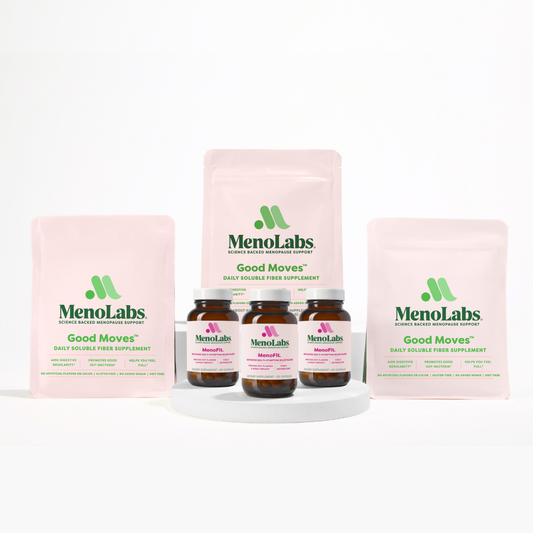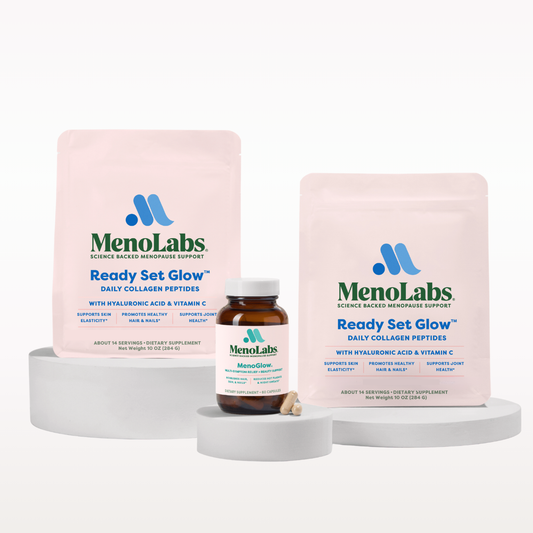
- Beauty
- Skincare
Top 5 Dangers to Skin from Sunlight
You probably know that chronic sunlight exposure can cause significant damage to the skin. Age spots, wrinkles, dry skin, and skin cancers are just some of the conditions your skin...
1 min read
You probably know that chronic sunlight exposure can cause significant damage to the skin. Age spots, wrinkles, dry skin, and skin cancers are just some of the conditions your skin can experience, especially as you enter menopause. What are some of the common skin conditions that women in menopause may experience, and, more importantly, how can you prevent them?
What is UV Light?
Ultraviolet light (UV light) is a form of radiation not visible to the human eye. There are a variety of UV light sources, but the most prominent one is sunlight. We interact with sunlight every day, and it can cause a variety of skin conditions.
Age Spots
These dark flecks of skin are common-place, especially for people with fair skin who spend too much time in the sun. Age spots, also referred to as liver spots, are caused by overactive pigment cells. When UV light shines on areas of the skin, it speeds up the production of melanin in skin cells. Melanin is the natural pigment that gives skin its color. Age spots often appear clumped together are usually an indication of prolonged sun exposure.
Wrinkles
Although wrinkles are a natural sign of aging, the definition of wrinkles can be worsened by UV light. UV rays increase the development of free radicals in the skin. These free radicals damage fibers of elastin, the protein that gives skin its elasticity. When these fibers are damaged, the skin loses the ability to bounce back when being pulled or pinched. As a result, the folds begin to appear in the skin and cause wrinkles.
Dry Skin
The skin produces natural oils through the sebaceous glands. These oils help the skin retain moisture. While standing out in the sun may cause the body to sweat, it isn't enough to keep the skin naturally moist. Chronic sunlight exposure can cause the skin to lose moisture over time. When skin loses the ability to retain moisture, it causes the skin to dry out, making the top layer of skin cells appear cracked and flake off. An early warning sign that you may be developing an extreme case of dry skin is how prone you are to sunburns. If you experience sunburns often, it's highly likely that your skin is losing moisture at an alarming rate.
Actinic Keratosis
Many people confuse dry skin and even eczema with this condition, but actinic keratosis is a serious skin condition that should be confirmed by a doctor. Actinic keratosis is a condition in which rough, scaly patches of skin form on different areas of the body like the back of the hands, the neck, the lips, ears, and forearms. While these patches may not seem like a serious condition, they can lead to the development of skin cancers as they promote the formation of lesions in those areas.
Skin Cancers
When we think of skin cancer, we often think of it as being one and the same, but there are several different types of skin cancers that you can develop. The three most common types of skin cancers are basal cell carcinoma, squamous cell carcinoma, and melanoma. Each of these cancer types is caused by the interaction between skin cells and UV light.
Each of these cancers develops in different skin layers, which are made of different skin cell types. Squamous cells are the flat cells in the top upper layer of the skin. These cells are constantly shed as new ones form. When these cells grow at an exponential rate, squamous cell carcinoma develops.
The second type of skin cells are basal cells. Basal cells are part of the lower layer of skin, just underneath the squamous cells. These cells are in a constant state of division and are used to replace the squamous cells that have flaked off the surface of the skin. Overproduction of these cells can lead to basal cell carcinoma.
The third skin cell type is the melanocytes. These are the cells that house melanin, the pigment that naturally gives skin its color. Melanin acts as the body's natural defense against sunlight. It protects the deeper layers of the skin from the effects of UV light. While melanoma skin cancer is less common than basal and squamous cell carcinoma, it spreads a faster rate than the other two. Melanoma is also more likely to be hereditary, but it is exacerbated by chronic sun exposure.
Now That You Know
These are just some of the skin conditions that can develop as a result of too much UV exposure, especially in menopause. So, the question is, what can you do? Tune in next week as we dive into the simple ways you can protect your skin from sun damage!
Related Products
Blend Besties Bundle
Fresh Start Bundle
4.7 / 5.0
(552) 552 total reviews






